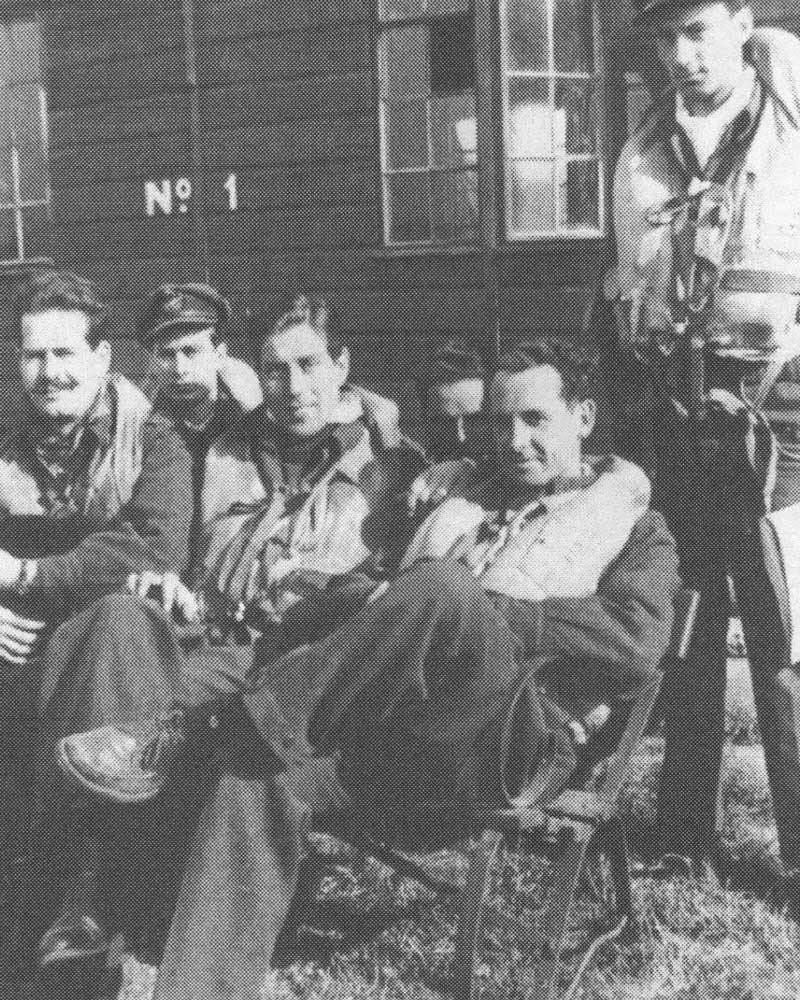
“On D-Day…the role of our 127 Wing, RCAF was to provide close cover for the beachhead armies against enemy aircraft,” he recalled in Jean E. Portugal’s We Were There—RCAF and Others.
The wing consisted of three squadrons—403 (Wolf), 416 (City of Oshawa) and 421 (Red Indian). “I was with 403 Squadron and I was 26 years old.
“The Wing did four patrols on D-Day, but I did two, one at noon and another around 8 p.m. All our aircraft were OK.
“It was a magnificent sight to see the naval and airborne forces go toward the beach. Hundreds of Dakotas towing gliders and carrying paratroops; Thunderbolts and Typhoons and Mustangs doing dive bombings just inside the beachhead. Hundreds of landing craft pouring onto the beach and an unbroken stream of naval craft all the way across the Channel.
“In addition to the Spitfire Wings, there were also Mustangs, Thunderbolts and Lightnings covering the beach and troops moving inland.”
“I looked over and below us and I saw some Typhoons heading back to our lines hell bent for leather.”
As spectacular as that experience was, Brown’s most memorable day of combat of came in mid-July 1944 as part of a group of 11 Canadians outnumbered by German fighters.
Brown and flight commander Andy MacKenzie, both flight lieutenants with 403 Squadron, were each leading a half-dozen Spitfires on patrol just west of Argentan, in northwest France, when they became involved in a terrific dogfight.
“I looked over and below us and I saw some Typhoons heading back to our lines hell bent for leather,” recalled Brown.
“I wondered what was chasing them. I looked behind and I saw a whole mass of German 109s coming…So I called Andy: ‘Come on over, we’ve got some joy (Germans) over here.”
But MacKenzie already had his hands full.
“We found when we got back that it was quite a well-known German formation (of) two groups of 55 Messerschmitts. And this was what we had tangled with,” said Brown.
“I looked around when I saw all the bullets (tracers) coming by me and my guy was gone…we never saw him again.”
Flight Officer M.B. Drury O’Kelly of Vancouver was flying behind Brown “and his job was to protect the guy in front.
“I looked around when I saw all the bullets (tracers) coming by me and my guy was gone. He never said a word, so I don’t know what happened to him. We never saw him again,” explained Brown.
Outnumbered, “eleven of us got in a hell of a scrap with those Messerschmitts,” he said.
“F/O H.V. (Harry) Boyle, of Toronto, got 3 planes; Andy MacKenzie got 2; and Jim Collier was credited with 1.”
But 403 Squadron lost one, piloted by O’Kelly. He is buried in the Écouché Communal Cemetery in Orne, France.
Advertisement












